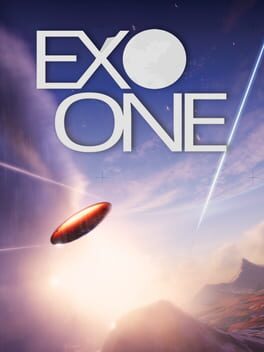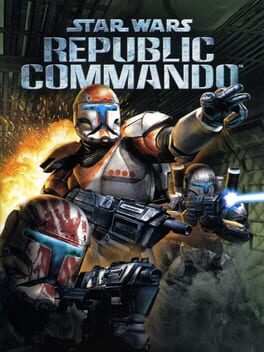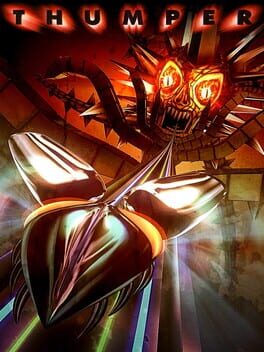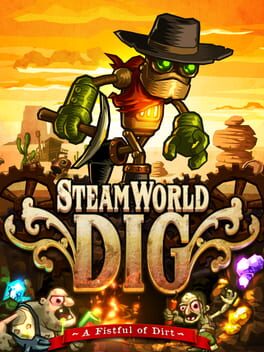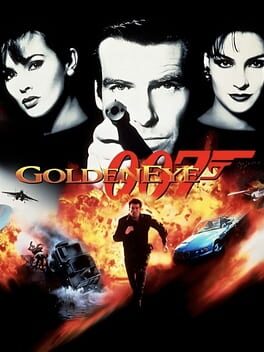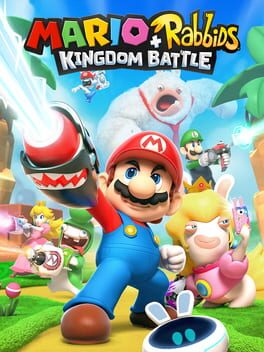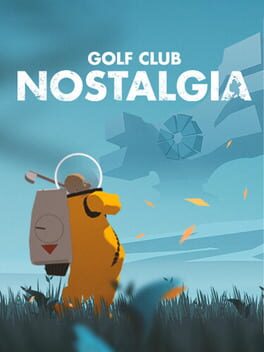Krombopulos_MK
It is amazing, in retrospect, that Prime managed to so fully translate Metroid into a first person platformer/adventure game over two decades ago. And now, with a fresh coat of paint and non-antiquated controls, it could pass as truly modern release.
Because a tremendous amount of the experience not only holds up, but also stands as a unique experience. Few games strike the balance of letting the player wonder like Prime does. There is always the tension that you could be totally lost, but there is such satisfaction from when a hunch proves right.
Beyond that feeling of wondering though, Prime excels in the difficult tasks of making enjoyable first person platforming and a steady stream of Puzzles that aren’t perfunctory but kind of the point. All wrapped in impeccable aesthetics from art direction to music.
Overarching, though, my one major criticism is that the game could have been tuned to make back tracking mildly less punishing. Not with fast travel or something against the spirit of wondering, but in giving the player more powerful tools to remove some friction in traversing earlier parts of the map. Prime somewhat does this, but something that speeds up movement by the end and weapon tuning for a late game area so it isn’t such a pain to go back through would be huge improvements.
But regardless, Prime’s final stretch of exploration and bosses are terrific and bring the game together as perhaps the best Metroid, despite the mid game friction. It still holds up today and makes me excited to see what the upcoming sequel will be like. I hope they have the confidence to keep this game’s DNA intact while perhaps pulling a few lessons in mechanics progression from modern Metroidvanas.
Because a tremendous amount of the experience not only holds up, but also stands as a unique experience. Few games strike the balance of letting the player wonder like Prime does. There is always the tension that you could be totally lost, but there is such satisfaction from when a hunch proves right.
Beyond that feeling of wondering though, Prime excels in the difficult tasks of making enjoyable first person platforming and a steady stream of Puzzles that aren’t perfunctory but kind of the point. All wrapped in impeccable aesthetics from art direction to music.
Overarching, though, my one major criticism is that the game could have been tuned to make back tracking mildly less punishing. Not with fast travel or something against the spirit of wondering, but in giving the player more powerful tools to remove some friction in traversing earlier parts of the map. Prime somewhat does this, but something that speeds up movement by the end and weapon tuning for a late game area so it isn’t such a pain to go back through would be huge improvements.
But regardless, Prime’s final stretch of exploration and bosses are terrific and bring the game together as perhaps the best Metroid, despite the mid game friction. It still holds up today and makes me excited to see what the upcoming sequel will be like. I hope they have the confidence to keep this game’s DNA intact while perhaps pulling a few lessons in mechanics progression from modern Metroidvanas.
I'm kind of at a loss for words with this one. At times excruciatingly slow, at others utterly captivating. Always mesmerizingly beautiful, subtly unsettling, and thematically dense. All written with characters and scenes worthy of a Pulitzer.
I found myself initially pulled in by questions about the nature of the world. What was real? What was happening? But eventually, Kentucky Route Zero gently pushes modernistic exploration aside and instead focuses on its themes and how the characters interact with them. The world that surrounds them is simply filled with icons that lend emotional resonance to its themes.
But by engaging with it on its own terms, Kentucky Route Zero is affecting. Absolutely thought-provoking and haunting. And has earned a place at the table alongside the other works of classic Americana.
I found myself initially pulled in by questions about the nature of the world. What was real? What was happening? But eventually, Kentucky Route Zero gently pushes modernistic exploration aside and instead focuses on its themes and how the characters interact with them. The world that surrounds them is simply filled with icons that lend emotional resonance to its themes.
But by engaging with it on its own terms, Kentucky Route Zero is affecting. Absolutely thought-provoking and haunting. And has earned a place at the table alongside the other works of classic Americana.
2021
2002
I am endeared to Ratchet & Clank due, in part, to how unrefined it is. There are a lot of rough edges, but for every oversight that would be later addressed, there is an oddity that is interesting. It’s a platformer with a ton of tools (some of which you hardly use) at your disposal instead of being a shooter first. The levels are linear paths, but branch in a Metroid lite sort of way, with rewards ranging from optional tools to currency that won’t be useful until you restart the game.
But perhaps the most interesting quirk is the premise itself. You follow a smack talking dick of a platform mascot as he reluctantly resists a corporation whose greed threatens the entire galaxy. Satires of capitalism, corporations, marketing, and hero worship abound as Ratchet and Clank travel together and eventually find common ground.
Unfortunately, throughout the course of the series, these interesting twists were sanded off as though they were rough edges, culminating in the absolutely soulless husk that was the 2016 movie tie in reboot of this game.
Perhaps this is why I’m so fond of the original. Beyond its bop of a soundtrack and lively art style, it is the kind of game that focus testing and years of formalizing the practice of game making have made practically extinct within the AAA space.
It’s not all rose colored glasses, Ratchet & Clank did have significant oversights in design that needed to be addressed. But at least it was trying a bunch of fun ideas and had something to say instead of trying to be dollar store Pixar.
But perhaps the most interesting quirk is the premise itself. You follow a smack talking dick of a platform mascot as he reluctantly resists a corporation whose greed threatens the entire galaxy. Satires of capitalism, corporations, marketing, and hero worship abound as Ratchet and Clank travel together and eventually find common ground.
Unfortunately, throughout the course of the series, these interesting twists were sanded off as though they were rough edges, culminating in the absolutely soulless husk that was the 2016 movie tie in reboot of this game.
Perhaps this is why I’m so fond of the original. Beyond its bop of a soundtrack and lively art style, it is the kind of game that focus testing and years of formalizing the practice of game making have made practically extinct within the AAA space.
It’s not all rose colored glasses, Ratchet & Clank did have significant oversights in design that needed to be addressed. But at least it was trying a bunch of fun ideas and had something to say instead of trying to be dollar store Pixar.
2023
Listen, I don’t like character action games, but Hi-Fi Rush is great. It is relentlessly joyous. Just positive vibes everywhere as the whole world gets down with the beat.
There are things I have minor quibbles with (jumping is not great), but the only massive oversight I found was a lack of manual audio calibration. It took me half the game messing with my audio setup to figure out the lag that was throwing me off. And then my on beat percentage improved dramatically.
But other than that, Hi-Fi Rush is an absolutely pleasant surprise.
There are things I have minor quibbles with (jumping is not great), but the only massive oversight I found was a lack of manual audio calibration. It took me half the game messing with my audio setup to figure out the lag that was throwing me off. And then my on beat percentage improved dramatically.
But other than that, Hi-Fi Rush is an absolutely pleasant surprise.
The premise, setting, and little flourishes (visor cleaning!) of Republic Commando go a long way in papering over the bones of an uninspired shooter.
And at the time of release, that window dressing was like being given secret knowledge. Both in having it tell a story that bridged the gap to Revenge of the Sith before it released and in giving a peak at boots on the ground with the clones. That feeling of revelation still endears me to the idea of Commando today, even if playing through it in modern times is fine at best.
And at the time of release, that window dressing was like being given secret knowledge. Both in having it tell a story that bridged the gap to Revenge of the Sith before it released and in giving a peak at boots on the ground with the clones. That feeling of revelation still endears me to the idea of Commando today, even if playing through it in modern times is fine at best.
2016
2013
2023
I assumed I would just play up through Facility as I have done countless times, but then I ended up running through Goldeneye again. And it turns out, when unshackled from archaic controls, it’s pretty dang fun! Poking around finding all the little things you need to do in a level is rewarding but mercifully brief. And there is something really charming seeing how, with such restrained resources, Rare set a delightful Bond atmosphere.
Sure, it gets up to its retro game BS by the end with some pretty frustrating encounters, but again, the levels are short and eventually you find ways to break those moments.
Goldeneye is, however, impossible for me to score at this point. The guns, maps, music, UI, everything really is dripping with nostalgia for me. What I will say is that if you have played Goldeneye before, this port may not give it a fresh cost of paint, but it does give the opportunity to play it as you remember it and not as it was with better controls, resolution, and performance. And even if you are new to it, I think there is something kind of special to experience here.
Edit: Also, I never realized that the cheats came from speed-running levels and that has really hooked me as an endgame. It turns how I played the levels on their head and nudges you towards how to break the game. It’s a super cool, whole new way to play that is rewarded with neat cheats.
For a game that was rushed to ship in 1997, it is pretty remarkable what Goldeneye managed to achieve.
Sure, it gets up to its retro game BS by the end with some pretty frustrating encounters, but again, the levels are short and eventually you find ways to break those moments.
Goldeneye is, however, impossible for me to score at this point. The guns, maps, music, UI, everything really is dripping with nostalgia for me. What I will say is that if you have played Goldeneye before, this port may not give it a fresh cost of paint, but it does give the opportunity to play it as you remember it and not as it was with better controls, resolution, and performance. And even if you are new to it, I think there is something kind of special to experience here.
Edit: Also, I never realized that the cheats came from speed-running levels and that has really hooked me as an endgame. It turns how I played the levels on their head and nudges you towards how to break the game. It’s a super cool, whole new way to play that is rewarded with neat cheats.
For a game that was rushed to ship in 1997, it is pretty remarkable what Goldeneye managed to achieve.
Kingdom Battle is better than it has any right to be in that it is a competent tactics game with a couple extraordinary boss battles. Even so, its vibe can’t shake the distinct feeling of being bootleg Nintendo found on a dollar store shelf. And it almost entirely runs out of new ideas by the half way point. And there is nothing about the world or exploration between battles that is interesting enough to coax a player forward to the next battle.
All this to say, the battles can be fun! It never got old to launch an enemy with a crit shot and then watch Mario and Luigi (via overwatch) take turns sending them to the stratosphere. But when the battles start to loose their luster, there is nothing else to pick up the slack.
All this to say, the battles can be fun! It never got old to launch an enemy with a crit shot and then watch Mario and Luigi (via overwatch) take turns sending them to the stratosphere. But when the battles start to loose their luster, there is nothing else to pick up the slack.
2022
Very few games offer such varied paths to legitimate and distinct ends as Citizen Sleeper does. While we all will potentially find the same characters and storylines, the way we encounter them, in a unique pressure cooker of obligations that is always threatening to burst, makes those beats take on different meanings depending on how you found them.
Someone screwing you over when you are starving or stocked gives a different vibe. Finding a string of schmucks or benevolence leads to different perspectives on the state of the station. All while the timers tick down and force you to focus on a few objectives at a time.
What is so impressive is that this dynamic leads Citizen Sleeper to supporting a variety of reads and endings legitimately supported by those experiences. There are not really “bad” endings, but instead endings that support the range of places people can come to while playing. And that is a feat worth appreciating.
Someone screwing you over when you are starving or stocked gives a different vibe. Finding a string of schmucks or benevolence leads to different perspectives on the state of the station. All while the timers tick down and force you to focus on a few objectives at a time.
What is so impressive is that this dynamic leads Citizen Sleeper to supporting a variety of reads and endings legitimately supported by those experiences. There are not really “bad” endings, but instead endings that support the range of places people can come to while playing. And that is a feat worth appreciating.
2019
Grindstone has the bones of a fantastic puzzle game that sucks all your spare attention for weeks. Fortunately for my spare time, it also has an unwieldy amount of currencies, too many moves that require being recharged by said currencies, and (its cardinal sin) making you pay currency to heal.
It’s a game both lacking micro-transactions and seeming built with them in mind. It wouldn’t seem out of place in the slightest for there to be a drop down menu offering 10,000 grindstones for $99.99. That gnawing feeling of resource scarcity will always break mobile games for me.
It’s a shame too, because Grindstone’s puzzles can be really fun.
It’s a game both lacking micro-transactions and seeming built with them in mind. It wouldn’t seem out of place in the slightest for there to be a drop down menu offering 10,000 grindstones for $99.99. That gnawing feeling of resource scarcity will always break mobile games for me.
It’s a shame too, because Grindstone’s puzzles can be really fun.
2018
It feels almost misguided to critique Golf Club: Wasteland for its golf when clearly its setting, aesthetic, and radio station are the showstoppers. But even if you are just going to use golf mechanics as the framework to tell a story, they should be up to par.
Then again, there has never been a better time to tell the cautionary tale of why Elon Musk won’t save us. Perhaps it gets a pass.
Then again, there has never been a better time to tell the cautionary tale of why Elon Musk won’t save us. Perhaps it gets a pass.
2022
You know, I was having a good time. Then it turned out that Justin Roiland is a horrific sack of crap, so I think I’m good.
https://www.nbcnews.com/tech/internet/justin-roiland-rick-morty-allegations-domestic-violence-charges-rcna65403
https://www.nbcnews.com/tech/internet/justin-roiland-rick-morty-allegations-domestic-violence-charges-rcna65403
2022
Crucial word to the wise: follow the dog. There will come a side quest that tasks you with following a dog and it single-handedly course corrects Ragnarok and tees off the game’s redemption.
Up until that point, Ragnarok begins with a captivating couple hours, followed by around ten hours of nearly derailing itself and another fifteen trying to claw itself back into good graces. The combat feels like it has significantly regressed and the limitations of the tight, behind the shoulder camera are obvious. The character dynamic and banter feels off. It’s all in desperate need of an editor. And a variety of other complaints that just make it feel like a slog.
But it begins to turn a corner. The combat, after far too long, returns to parity with the first game and then expands. The characters find themselves and the writing really starts to click. The pace quickens.
And then you find the dog, whose insanely expansive quest brings all these aspect to full fruition. Ragnarok finally lives up to its potential. Which is followed by, once you return to the main path, the game swinging for the fences and becoming incredible.
Those last ten hours before the credits roll make me want to forgive and forget Ragnarok’s glaring faults, but I can’t. No game should be let off the hook for the gigantic, fundamental problems this game has. Thankfully, Ragnarok profoundly rewards the persistent. It is my hope, however, that Sony Santa Monica can tighten up future projects and rethink some core commitments that weighed this project down.
Up until that point, Ragnarok begins with a captivating couple hours, followed by around ten hours of nearly derailing itself and another fifteen trying to claw itself back into good graces. The combat feels like it has significantly regressed and the limitations of the tight, behind the shoulder camera are obvious. The character dynamic and banter feels off. It’s all in desperate need of an editor. And a variety of other complaints that just make it feel like a slog.
But it begins to turn a corner. The combat, after far too long, returns to parity with the first game and then expands. The characters find themselves and the writing really starts to click. The pace quickens.
And then you find the dog, whose insanely expansive quest brings all these aspect to full fruition. Ragnarok finally lives up to its potential. Which is followed by, once you return to the main path, the game swinging for the fences and becoming incredible.
Those last ten hours before the credits roll make me want to forgive and forget Ragnarok’s glaring faults, but I can’t. No game should be let off the hook for the gigantic, fundamental problems this game has. Thankfully, Ragnarok profoundly rewards the persistent. It is my hope, however, that Sony Santa Monica can tighten up future projects and rethink some core commitments that weighed this project down.


